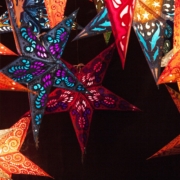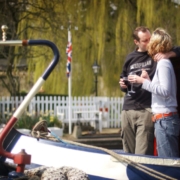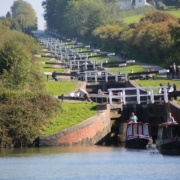Drifters’ A to Z of canal boat holidays
A is for Anderton Boat Lift – also known as the ‘Cathedral of the Canals’, this fascinating example of Victorian engineering provides a 15-metre vertical link between the Trent & Mersey Canal and River Weaver Navigation.
B is for Bingley Five-Rise Locks – completed in 1774, this spectacular staircase of locks on the Leeds & Liverpool Canal near Bradford, raises (or lowers) boats 18 metres in five cavernous chambers.
C is for Caen Hill Flight – with 16 of its 29 locks falling in a straight line, the Caen Hill flight of locks on the Kennet & Avon Canal at Devizes in Wiltshire is visually the most impressive in the country.
D is for Docks – built to accommodate ships and store cargoes, such as London Docklands, once the busiest in the world and Liverpool’s Albert Dock, a World Heritage site.
E is for Everywhere – there are over 2,000 miles of navigable waterways to explore in Britain, and half the UK’s population lives within five miles of a navigable canal or river.
F is for Falkirk Wheel – the world’s first and only rotating boat lift which stands 35 metre high and moves boats between the Union Canal and Forth & Clyde Canal in Scotland.
G is for Gongoozling – the leisurely watching of boats, often passing through a lock, it’s thought the word may have arisen from the Lincolnshire dialect ‘gawn’ and ‘goozle’, both meaning to stare or gape.
H is for Heritage – canals were built to transport goods and materials to support the Industrial Revolution and are vital part of our nation’s industrial heritage.
I is for Iron Trunk Aqueduct – built in 1811 by canal engineer Benjamin Beavan, this impressive 10-metre high structure carries the Grand Union Canal over the River Ouse near Wolverton in Buckinghamshire
J is for Jessop – one of the great canal engineers who worked on the Grand Union, Rochdale and Llangollen canals.
K is for Kennet & Avon Canal – which travels 87 miles through spectacular scenery, linking the River Thames and the Bristol Avon.
L is for Locks – there are over 1,650 locks on the canal system, all enabling boaters to travel up and down hills.
M is for Mooring – along the length of the majority of our inland waterways boaters are free to choose where they stop to moor for the night.
N is for Navigation – another word for a canal and travelling by vessel, you don’t need a licence to skipper a canal boat and tuition is provided as part of canal boat hire packages.
O is for Oxford Canal – one of the oldest canals in Britain meandering slowly through the countryside, this canal opened in sections between 1774 and 1790 to transport coal from the Coventry coalfields to Oxford and the River Thames.
P is for Pubs – there are hundreds of waterside inns along Britain’s canals and rivers, many of them historic rural locals, so you’re never too far away from the next watering hole.
Q is for Queen Elizabeth Olympic Park – the six-mile network of historic industrial rivers that criss-cross the Queen Elizabeth Olympic Park in East London were restored to full navigation as part of preparation for the London 2012 Olympics.
R is for Relax – with canal and river speed limits of just 4mph, canal boat holidays are said to be the fastest way to slow down, relax and escape the stress of busy modern lives.
S is for Standedge Tunnel – at over three miles long tunnelling beneath the Pennines, this incredible feat of 18th and 19th century engineering is the longest, highest and deepest tunnel on the canal system.
T is for Telford – another of the great canal engineers, Thomas Telford worked with William Jessop on the Llangollen Canal and was responsible for the magnificent UNESCO World Heritage Status Pontcysyllte Aqueduct.
U is for Underwater – canals support a thriving underwater ecosystem of many varieties of fish, eels, invertebrates, larvae and underwater plants.
V is for Vole – best known as ‘Ratty’ from ‘Wind in the Willows’, but sadly now one of our most endangered species, to spot a water vole look out for closely grazed ‘lawn’ areas, often covered with neat piles of chopped grass and listen for the ‘plop’ sound as they enter the water.
W is for Wildlife – waterways provide homes for large numbers of birds, plants and animals, including many protected species, like water voles, otters, bats and kingfishers, so there’s always something special to look out for.
X is for Station X – close to the Grand Union Canal at Fenny Stratford in Milton Keynes, Station X at Bletchley Park is where Britain’s wartime code breakers helped win the Second World War.
Y is for Yesteryear – with a much slower pace of life, a friendly camaraderie amongst boaters and a structure that hasn’t fundamentally changed for 200 years, the canals are often described as an escape to yesteryear.
Z is for Zoo – the Regent’s Canal passes alongside ZSL London Zoo, giving boaters the chance to spot a variety of exotic birds in the spectacular Northern Aviary, designed by Lord Snowdon.









